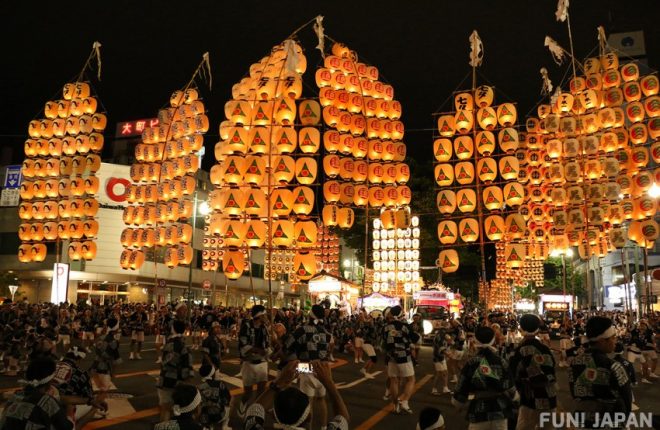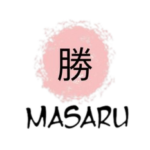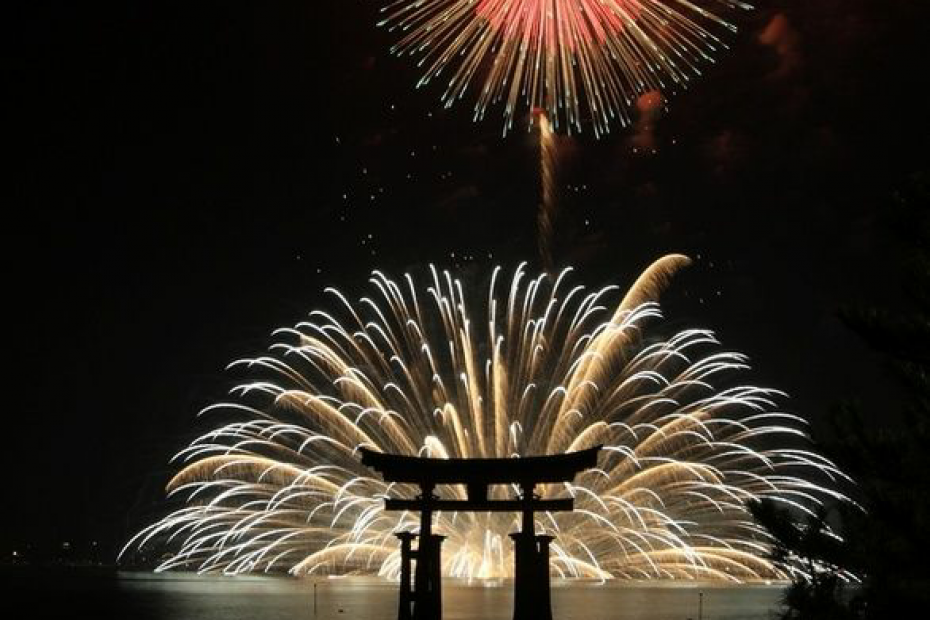In a very fast-paced and ultra-modern country like Japan, festivals are an integrant part of keeping ancient traditions alive and passing them on to younger generations. While most of them are exciting, some are totally unbelievable–and all of them are enchanting. Here, every city has it’s own unique festival. The country hosts stunning annual festivals, some of which have been celebrated for centuries. Matsuri, Japanese for festivals, offers visitors a glimpse of their culture. Below are some of Japan’s most jaw-dropping and spectacular year round festivals:
Hakata Gion Yamakasa
The Hakata Gion Yamakasa festival renowned to be one of the most impressive ones of Japan. The festival dates back to the 13thcentury and was started to exorcise the plague. Giant floats or kakiyama which measure up to 10 meters and weigh about 2 tons are built by local puppet makers and decorated with symbol of myths and historical characters. There are teams of hundreds of men who drag these gigantic floats through the city along a 5 kilometre long trail in a crazy race.
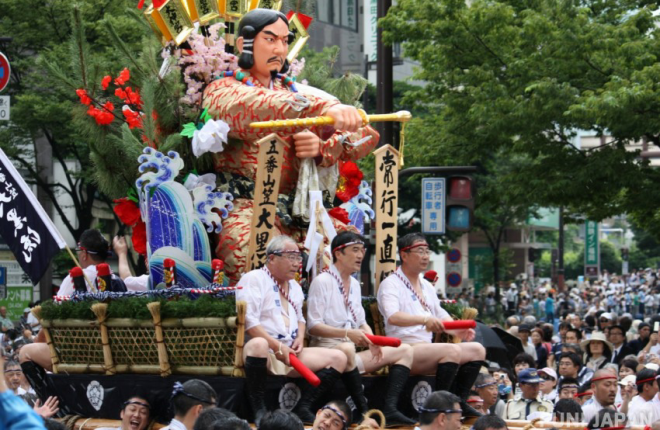
Awa Odori
The Awa Odori festival is Tokushima city’s most famous attraction and the subject of national attention which is held every year in August. Over a million people turn out in the streets to enjoy it. It is the greatest of Japan’s dance festivals in which teams of dancers move through the city, entertaining more than a million spectators. This high-energy and jubilant celebration dates back over 400 years! unbelievable right? The groups of dancers known as ren accompanied by musicians perform in a procession along the city streets between 6 p.m. and 10:30 p.m. each day of the festival.
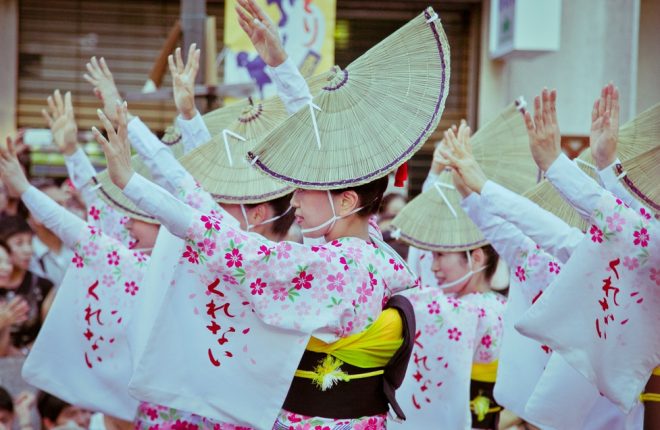
Asakusa Samba
Rio comes to Tokyo at the Asakusa Samba Festival annually at the end of August. First held in 1981 in an attempt to revitalise the neighbourhood, the carnival is now one of Tokyo’s more popular summer events, drawing half a million spectators. It starts around 1 pm and goes on until 6 pm. Consisting of twenty-two teams, including local Japanese and Brazilians, they all together bring dancing to the streets around Asakusa Shrine. The sidewalks are packed by around half a million spectators, so it’s best to come early. Many of the Brazilian teams are dressed in the traditional plumage of feathers and sequins, while Japanese teams tend to wear costumes that are representative of their native region in Japan. Including fascinating costumes, there are people singing or playing various musical instruments.
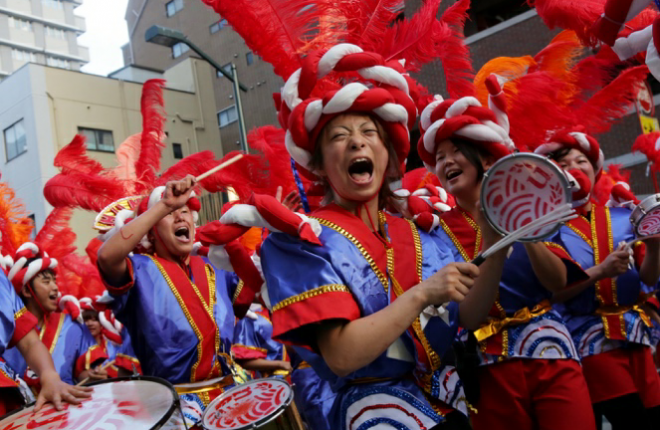
Miyajima Fireworks Festival
This fireworks festival combines one of Japan’s most scenic places with one of Japan’s favourite summer activities – fireworks. Each year in the middle of August, Itsukushima Shrine on Miyajima Island hosts a spectacular Myaima water fireworks festival. Three barges loaded with pyrotechnics are towed into the bay behind the iconic “floating” torii gate. Rockets screech into the night, which fill the sky with glittering fire-flowers. Thousands of people visit tiny Miyajima for the show. There are photographers from around the world hoping to capture the very moment when the torii gate is silhouetted by the fireworks.
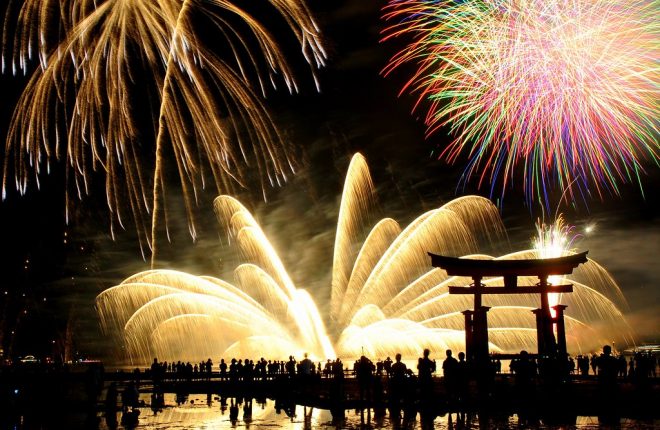
Jidai Matsuri
Kyoto’s Jidai Matsuri is a festival that takes place every year on October 22, the anniversary of the foundation of Kyoto. It is an elegant parade of period costumes that travels from the Imperial Palace to Heian Shrine. Jidai Matsuri is Japanese for “Festival of Ages”, and the participants of the parade are dressed in accurate costumes from almost every period of Japanese history as well as famous historical figures. There are usually around 2,000 participants, including Shinto priests, samurai, archers on horseback, and local dignitaries, but the stars of the festival are Kyoto’s geisha, known as geiko, who are dressed as historical figures.
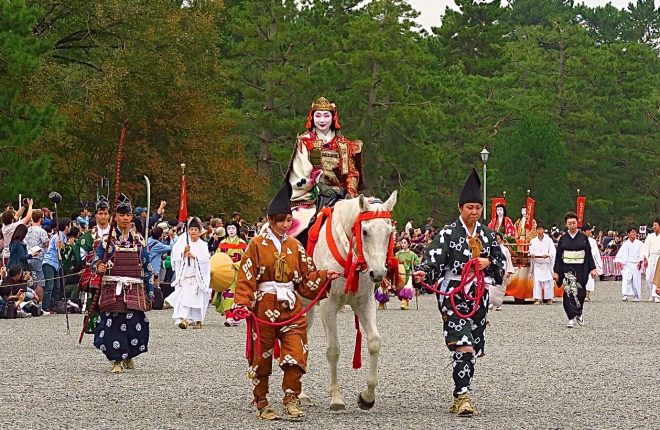
Akita Kanto Matsuri
Akita Kanto Matsuri, or pole lantern festival, is the simple act of carrying a paper lantern into a competitive event. This festival is all about carrying lanterns over their head. Sounds easy isn’t it? People tend to carry and balance at least 46 lanterns.
